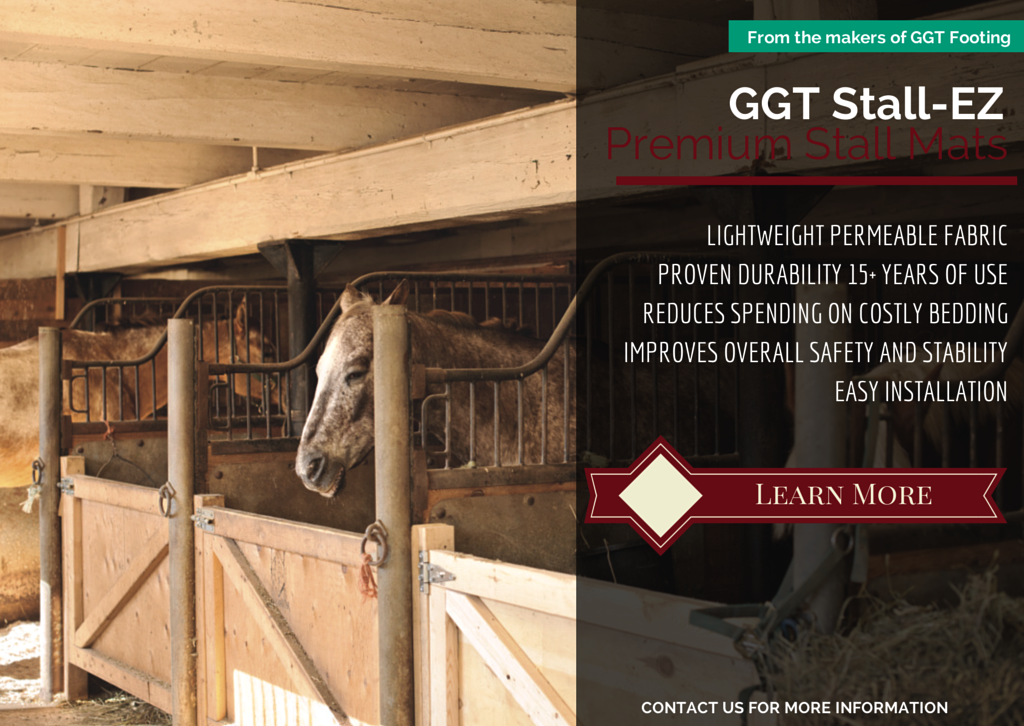Many people think of lameness as just something that happens, but most cases of lameness are preventable. Even injuries that seem to be the result of uncontrollable events can often be traced to errors in basic horse management. Preventing lameness starts from the ground up.

Footing
The footing the horse works on is of paramount importance in preventing lameness. Too-deep footing can stress the ligaments and tendons to the point of failure. Footing that is too slippery can cause catastrophic falls. Footing that is too hard stresses the joints and can lead to chronic arthritic conditions. Installing an excellent footing such as GGT Footing is your best option for preventing horse lameness.
Hoof Care
Proper hoof care is essential for a sound horse. Hooves that are too long or are maintained at the wrong angles can cause ligament and tendon injuries. A wide variety of lameness-inducing hoof problems such as thrush, stone bruises, abscesses and possibly even navicular syndrome can be prevented by careful attention to hoof care and correct shoeing.
Bedding
Bedding in the stall should be dry and deep enough to encourage the horse to lie down to rest. The stall floor should be level and preferably covered with comfortable shock-absorbent mats to relieve stress on the horse's legs and feet.
Proper Conditioning
Many injuries are actually due to the horse becoming too tired during the course of the activity. Tired muscles can't support joints, and tired horses are more likely to stumble, slip or mis-judge the height of the jump. Make sure your horse is in a state of proper physical fitness before asking the horse to engage in any physically demanding activity. "Weekend warrior" syndrome is a major cause of lameness in horses- the horse that stands around all week and then goes to a three-day horse show, out on a 20-mile trail ride or joins up with the local fox-hunt is a horse that is very likely to go lame.
Proper Warm-up and Cool Down
Stiff, cold muscles and ligaments are more likely to tear than warm, loose ones. Walking and then trotting for ten to 15 minutes before beginning a more physically demanding activity can prevent a lot of injuries. After a workout, walking on a loose rein for ten minutes can help keep muscles from stiffening up.
Regular Turnout
This aspect of horse management should probably be grouped with proper conditioning. Horses that can move around for several hours each day in turnout naturally develop very strong bones, ligaments and tendons. Horses that stand in a stall for 23 hours a day never develop this type of naturally strong skeletal structure and are much more likely to suffer catastrophic injuries in response to minor stresses.
If you're interested in preventing lameness by building a new arena or improving your current arena, don't hesitate to contact us.


